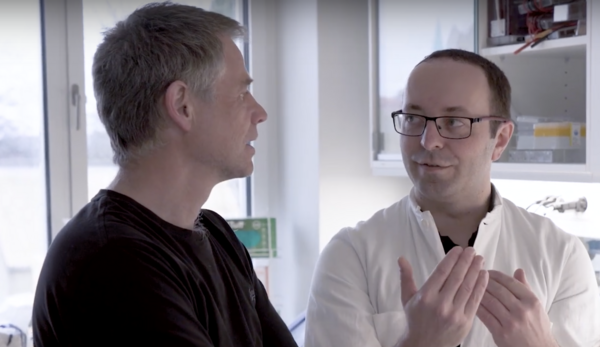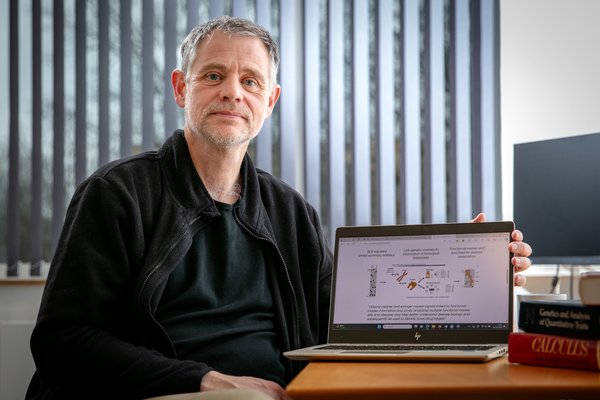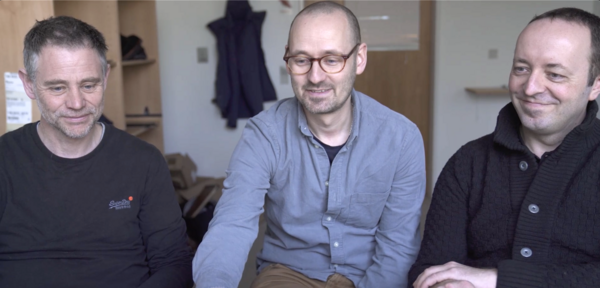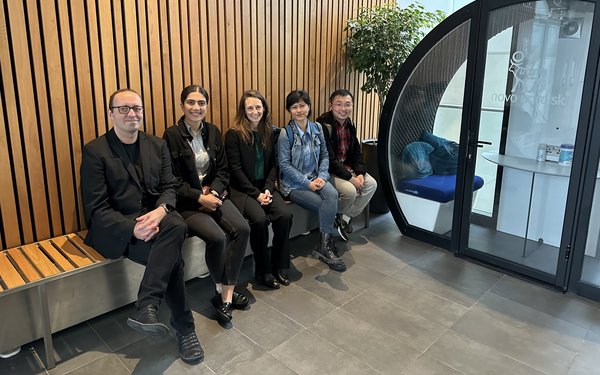Using in silico experiments to identify new drug targets for diabetes
The BALDER project was one of the funded projects in the ODIN pilot (2020-2023). Here you can read how the BALDER team used in silico experiments and already existing data to identify new biomarkers and drug targets for diabetes.
”It’s actually super simple,” says Peter Sørensen when asked about the math, which forms the basis of the gact software package developed in the BALDER project and adds: “We designed the software to be user-friendly and validated its effectiveness with data from experimental research on type 2 diabetes.”
BALDER combines computational and clinical expertise
Peter Sørensen has a knack for programming. With a background in quantitative genetics, the head of the BALDER project has a partiality to words such as R-package, modelling, and Multi-Trait Bayesian Linear Regression. Words that are not used at random in more traditional diabetes laboratory research.
And that’s exactly what it’s all about: The BALDER project is not an average research project on diabetes. In contrast to most other projects, the BALDER project is an in silico research project. In silico implies that all BALDER experiments are performed on a computer – not in the laboratory. This does not mean, however, that the project team consists only of Peter Sørensen and his computer. On the contrary: The BALDER team includes extensive clinical expertise to ensure that the data is correctly interpreted, prioritized, and put into the right context in relation to type 2 diabetes.
“As a board-certified clinical pharmacologist my role has been to relate the scientific findings, such as gene discoveries, from the BALDER project to a biological or clinical context. This has been done with excellent assistance from the other scientists in the project” says Mads Fuglsang Kjølby. From his point of view, it has been very interesting to work with the BALDER team because they all have diverse backgrounds rooted in either statistics, genetics, pharmacology, or within medicine.

From idea to project – shifting focus from livestock to humans
Before going into more detail about the software package developed in BALDER, let’s take a look at how the project started:
The basic idea for the software used in BALDER originated more than 10 years ago. At that time, Peter Sørensen worked with livestock as he laid the groundwork for the software package. The actual name of the software package is in fact ‘gact’ which is short for Genomic Association of Complex Traits.
While developing the scientific concepts that form the basis of the gact software package, Peter Sørensen became interested in applying these principles to other species including humans. “Although I was keen on moving my research focus to a human setting, it turned out to be rather difficult to attract funding and find collaborators. I wanted to get more hands-on experience with human genetics. In 2016, I accepted a job in an Oxford-based startup company with human geneticists. I worked there until 2020 and it gave me valuable expertise – also in relation to the BALDER project” explains Peter Sørensen.
When Peter Sørensen returned to Aarhus University in 2020, he was encouraged to pitch his idea about the software package and its potential use for drug discovery in the ODIN network. This turned out to be the beginning of the BALDER project and the collaboration with Mads Kjølby and the Novo Nordisk Research Centre in Oxford. Together they have spent the last two years developing and validating the gact software package.

The gact software package helps interpret existing data
The math in the gact software package, which Peter Sørensen describes as “simple”, might not be easily understandable to the general reader. However, the basic idea behind the software is in fact simple: It helps the user interpret genetic information from selected databases by filtering the information based on given input criteria such as specific genes, proteins, biological pathways, and drugs.
”With the gact software package, we enable researchers to discover new connections between genetic entities, such as biological pathways, and complex traits, like diabetes. All the users must do is to choose specific filters such as biological pathways or types of drugs. Depending on the filters used, the user will receive different output from the software. For instance, the software can provide new insights that can help the user identify or validate new biomarkers and drug targets,” says Peter Sørensen.
Peter Sørensen compares the filters to the turning of a kaleidoscope - an optical toy similar to a binocular made with two mirrors and small bits of colored glass. Depending on how you turn the house of the kaleidoscope, you will see different geometrical designs, but never quite the same twice. “When you choose the input data for the gact software package, you start turning the kaleidoscope with pieces of colored glass that represent your input values. Until you have selected specific filters, it’s like continuously turning the kaleidoscope: The image you see is constantly changing. When the filters have been set, the geometrical pattern stops changing and a single very specific pattern lets you see something completely new. In this way, the gact software package helps you see the data in a new perspective and thus interpret the data that is already out there. You might possibly also see new connections between genes and diseases, or drugs” explains Peter Sørensen.

A versatile software package applicable to many diseases
The gact software package was built to be used as a case study with data from experimental studies on diabetes. However, before applying the gact software package on the diabetes data, it was validated in thorough simulation studies. Following the initial validation, the effectiveness of the gact software package was continuously validated through the case study with type 2 diabetes.
Mads Fuglsang Kjølby believes that both the project itself and its outputs have been very interesting: “Through several large genome data sources, we have been able to confirm known hits related to development of diabetes, but also new hits that we are investigating further. Moreover, we have been able to connect drugs to anticipated hits, and also identified new hits. For example, some classes of immune modulating drugs that points to certain pathways which affect plasma glucose levels. Our findings show that the method works, as we are able to confirm previous findings that has been identified with other methods.”
The BALDER team will continue to improve the gact software package. A future potential use of the gact software package is to help stratify type 2 diabetes patients based on where the patients have genetic mutations. Hopefully, this can help clinicians find out how to best help the patients and also predict how the disease will develop. “There are so many exciting potential uses of the gact software package. I’m looking forward to new collaborations, both in relation to type 2 diabetes but also within other disease areas. The input and the filters allow the user to focus on exactly the disease and the context that they are interested in,” Peter Sørensen says.

The gact software package is openly available for everyone to download at https://psoerensen.github.io/gact/. You are welcome to contact Peter Sørensen, if you have questions about the software or need help getting started.